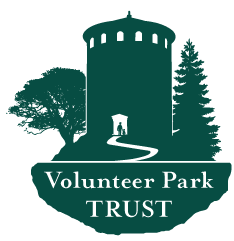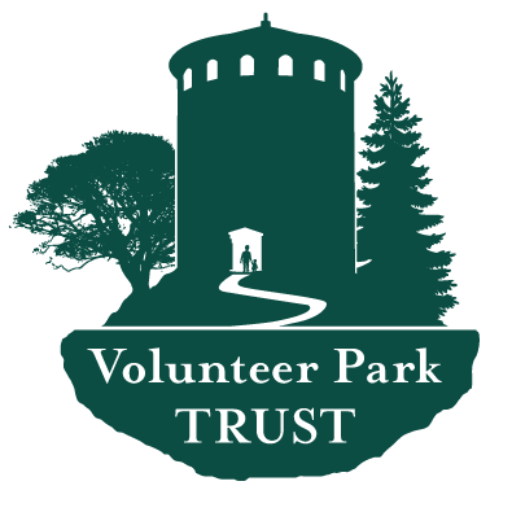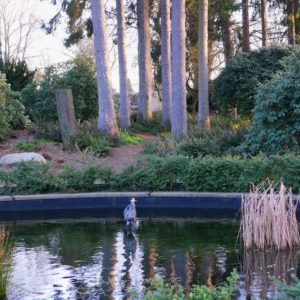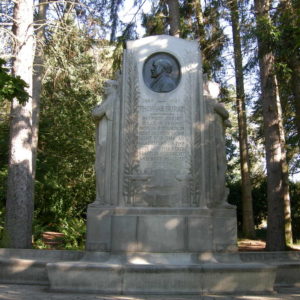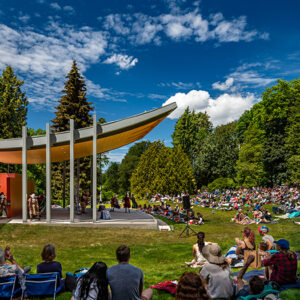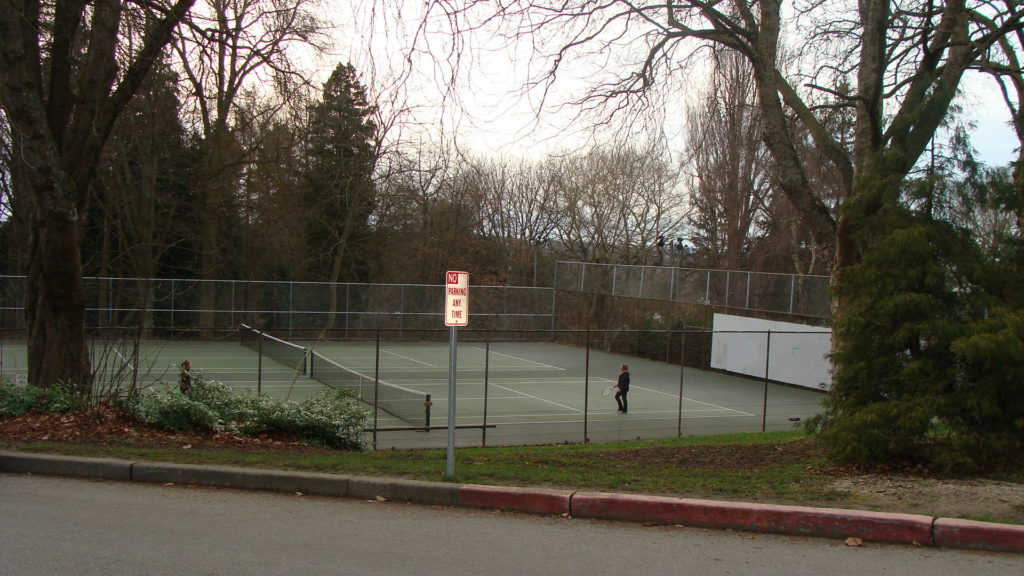
John Charles Olmsted characterized Volunteer Park as a landscape park. This meant that it was primarily designed for people to enjoy the landscape — the lawns, the planting beds, the groves of trees.
Audio Player
John Charles Olmsted characterized Volunteer Park as a landscape park. This meant that it was primarily designed for people to enjoy the landscape — the lawns, the planting beds, the groves of trees. The programmed spaces — those parts of the park designed for specific activities — were concentrated along the concourse and along the north side of the park. Those included a concert grove and pergola where the Seattle Asian Art Museum is located today, the playground and Little Folks Lawn at the north end of the park, and the greenhouse and conservatory located at the north end of the concourse.
That is not to say that Olmsted was opposed to tennis courts in the park. He proposed a pair of courts in the location of the conservatory as a means to minimize costs because the greenhouse then proposed for that space was a much larger expense. The Park Department decided to build the conservatory at that location. Park users still desired tennis courts, however, so in 1912 a double tennis court was built near the greenhouse. The second double set was added in 1915.
Other things to see at the park
Lily Ponds
Two lily ponds flank the terrace along the west side of the Concourse.
The Burke Memorial
Judge Thomas Burke was an important civic leader in Seattle.
The Amphitheater
The performing arts have been part of Volunteer Park’s history since the first concert grove was constructed in 1910.
